
I walked around UBC campus at nighttime taking photographs of anything that was square shaped. The task was surprisingly difficult as most things aren’t perfect squares. The decision to photograph things that were broadly square made drawing relationships between photographs slightly more difficult.
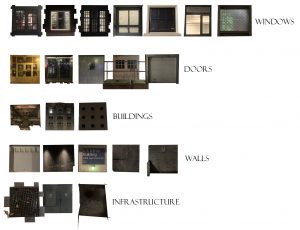
I started out with trying to organize each element broadly as a door, window, wall, building, or element of infrastructure. I didn’t notice a pattern here that I enjoyed so I decided to develop other relationships between photographs.

The squares were then organized determined on their level of complexity, starting with flat blank walls and building up to complex leaded glass windows with cut stone encasements.

Using trace paper I outlined the patterns within each square and started mapping recurring elements using symbols. I took note of “Cubes in Cubes” as well as “Sets of Six” between squares on all layers of the complexity chart.
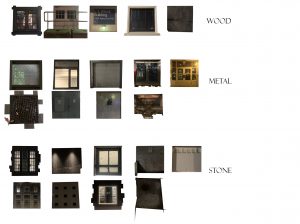
I then organized the squares based on their predominant materiality, which fit into three categories: wood, metal, and stone. 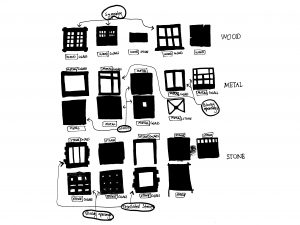
using trace paper I blacked-out the presence of each material within each square to map how each material was organized. I tried to generalize how each material acted by annotating recurring patterns and characteristics, and then use these mapped characteristic and patterns to develop “standard” squares for wood, metal, and stone.
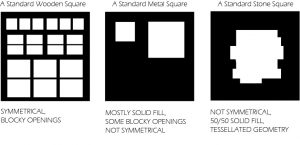
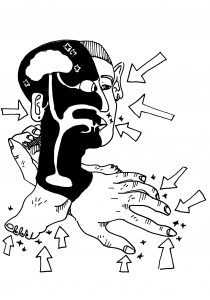
Drawn in class, this figure represents my understanding of the Seeing Environment course. The class helped me to expand my own understanding of my body and senses, so I drew myself with all of my sense receptors at scales proportionate to their importance in experiencing the world around oneself. I’ve learned to understand my own body as a toolkit of data collectors connected to seemingly invisible internal systems that decipher information.
